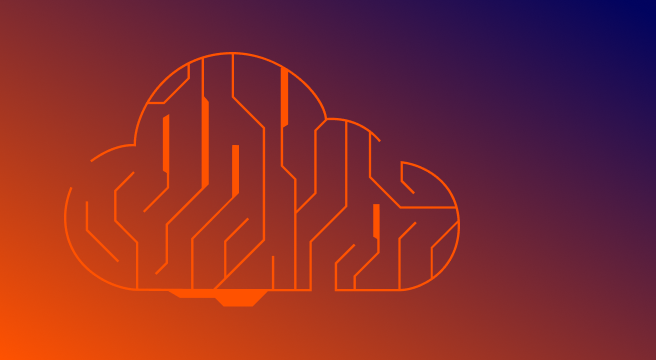IAM 建置指南
Published | July 16, 2025 |
9 steps for security and compliance
Implementing identity and access management (IAM) strengthens security by controlling who can access critical systems and data while ensuring compliance. This IAM guide covers key IAM implementation steps like assessing security posture, defining access policies, integrating with IT ecosystems and continuously optimizing IAM to mitigate evolving threats.
What is identity and access management (IAM)?
Identity and access management (IAM) ensures that only authorized users can access sensitive systems, apps and data. A well-implemented IAM solution enhances security, reduces insider threats and improves compliance with regulatory frameworks.
Implementing identity and access management
This guide explores nine critical steps in the IAM implementation process, covering everything from assessing your security posture to continuous optimization. Following these steps can strengthen your defenses and streamline identity governance.
Nine steps to IAM implementation
Step 1. Plan and strategize. (Set scope.)
Define IAM goals and governance strategy. Before diving into implementation, define your IAM goals and align them with business objectives.
A strong IAM governance framework ensures access control policies and identity lifecycle management align with security requirements and compliance standards.
Key steps in IAM planning
- Identify stakeholders to engage with, like IT, security teams, compliance officers and business leaders.
- Define objectives and set goals like reducing unauthorized access, improving compliance and automating user provisioning.
- Develop an IAM roadmap that outlines implementation phases, timelines and resource allocation.
Pro tip: Develop a clear IAM strategy to prevent inconsistent policies and increased security risks.
Step 2. Assess security posture.
Before implementing IAM, assess your security posture. It involves reviewing current identity and access controls, identifying policy gaps and understanding the risks associated with different access levels.
Your assessment should consider factors like user roles, data sensitivity, compliance standards and potential threats to find other areas where IAM can strengthen security.
What to assess
- User roles and access permissions to identify who needs access to which resources.
- Data sensitivity levels to determine which data and systems require strict access control.
- Compliance standards to assess alignment with regulations.
- Potential threats to identify insider risks, external attack vectors and privilege escalation scenarios.
Expert insight: Integrating a cloud infrastructure entitlement management (CIEM) solution can bridge gaps in managing complex entitlements for service identities to support IAM implementation.
Step 3. Define access policies and controls.
Once you’ve assessed your security posture, define clear access policies and controls. These controls establish who can access which resources, under what conditions and what methods they can use.
Types of access control models
- Role-based access control (RBAC) to grant access based on user roles.
- Attribute-based access control (ABAC) to define access based on attributes like location, device type, or time of access.
- Least privilege principle to ensure users only have access to what’s necessary for their roles.
Compliance tip: According to NIST's Digital Identity Guidelines (SP 800-63), access policies should align with risk-based identity assurance levels (IALs) and authentication strength (AALs) to improve audit-readiness and reduce compliance risks.
Step 4. Integrate IAM with your IT ecosystems.
To maximize IAM effectiveness, integrate IAM with your existing IT ecosystems, including cloud services, on-prem infrastructure and third-party applications.
It supports seamless access management across your entire enterprise, ensuring consistent IAM policy enforcement across your systems.
Integration priorities
- Cloud platforms to ensure IAM is compatible with multi-cloud and hybrid environments.
- CI/CD pipelines to automate identity management in DevOps workflows.
- Third-party apps to centralize access management across SaaS applications.
Pro tip: Seamless integration enhances visibility and control over user access and reduces the risk of privilege misuse.
Step 5. Continuously test and optimize.
Effective IAM implementation does not end with initial deployment. Routinely testing and optimizing IAM systems ensures you can adapt to changing security landscapes and business needs.
Regular vulnerability scans, penetration tests and other security reviews can help ensure your IAM systems withstand emerging threats.
Also, monitor the performance of your IAM solutions to ensure they scale with user demands and new technology integrations.
Continuous optimization activities
- Vulnerability scans and pen testing to identify weaknesses before attackers exploit them.
- Policy refinement and regular reviews to adjust access control policies.
- Monitoring and auditing to continuously check for misconfigurations and privilege overreach.
Tenable insight: Tenable recommends applying an identity security posture management (ISPM) approach, which focuses on proactively monitoring for misconfigurations, privilege overreach and identity-based attack paths across the enterprise. By integrating tools like Tenable Identity Exposure, you can reduce risks before exploitation, rather than reacting after a breach occurs.
Continuous optimization involves analyzing access control policies, refining user management processes and aligning IAM practices with evolving compliance regulations.
A robust IAM system requires iterative improvements and the agility to adapt to organizational growth, regulatory changes and the ever-expanding threat environment.
Step 6. Measure IAM success.
Establish and track key performance indicators (KPIs) and performance.
IAM performance metrics
- Login success rates to measure successful versus failed authentication attempts.
- Time-to-revoke privileges to track how quickly you can revoke access after role changes.
- Access violation incidents to monitor unauthorized access attempts.
Pro tip: Regularly review these KPIs to ensure your IAM policies and processes alignment with organizational objectives.
Step 7. Establish identity governance and administration (IGA).
Automate your identity lifecycle. IGA automates provisioning, de-provisioning and auditing processes to ensure compliance and reduce human error.
IGA capabilities
- User provisioning to automate account creation and role assignments.
- Access reviews to conduct periodic audits to verify access appropriateness.
- Policy enforcement to enforce consistent access policies across environments.
Compliance insight: IGA ensures you continuously align your identity and access policies to industry regulations to minimize compliance gaps.
Step 8. Understand common IAM implementation concerns.
IAM FAQ
What are the critical phases of IAM implementation?
Critical IAM implementation phases include planning, assessing security posture, defining policies, integrating with ecosystems and continuous optimization.
How can organizations ensure IAM compliance?
Align IAM policies with security and compliance frameworks like ISO 27001 and PCI-DSS. Automate compliance checks using IGA solutions.
What’s the difference between RBAC and ABAC?
RBAC assigns permissions based on user roles. ABAC uses attributes to dynamically define access conditions.
How does IAM improve cloud security?
IAM enforces access controls across cloud environments that prevent unauthorized access and mitigate privilege escalation risks.
Why is continuous IAM optimization necessary?
Your threat landscape evolves, so you need regular testing and policy adjustments to remain secure and compliant.
Step 9. Secure your organization with IAM best practices.
Prioritize continuous monitoring, policy refinement and regular testing to keep IAM systems aligned with evolving security landscapes.
Ready to take the next step? Schedule a security assessment to evaluate your current IAM posture.
IAM 資源
IAM products
您可以利用的網路安全最新消息
- Tenable Cloud Security
- Tenable Identity Exposure
- Tenable One


